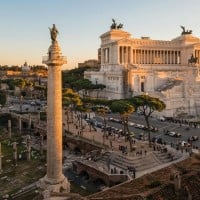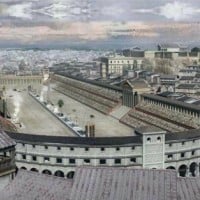Top 10 Roman Architectural Wonders
The Romans, with their well deserved accolades for improving on existing technology, literally built the world anew, and implemented ingenious advances in structural design, many that remain today. The Romans borrowed design concepts from the Etruscans, ancient Greeks, Babylonians and to some extent, even ancient Egypt. Roman architecture built on those foundations, and became the measuring stick for European architectural design not seen again until after the European "Dark Ages". Their implementation of the Arch, and the Vault, are cornerstones of Roman designs of antiquity. The Roman Arch, for instance, is much stronger then any beforehand, and can support much more weight. Please feel free to add any that apply.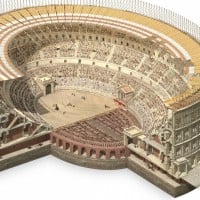
The Flavian Amphitheater. What a sight it must have been in her prime. Built to accommodate 50,000 spectators, it is indeed one of the most spectacular achievements of ancient engineering. From flooding the arena for mock naval battles, to the infamous Gladiatorial games, to the even more brutally inhumane killing of slaves. this arena was the highlight of what Rome was.
Such an incredible thing to see, just imagine what it was like when it was first built. I do wish it had been used for better purposes though, but now it is an awesome tourist attraction.
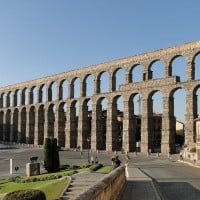
Many aqueducts of various designs were scattered over the Roman Empire, the earliest was built in 312 BC, but this may be the most impressive, with much of it remaining today. Note the use of Roman arches for strength.
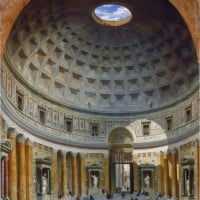
Spectacular domed structure. It's facade is one of the most imitated designs in history. Its interior (pictured) is breathtaking, with its most fascinating feature being a circular hole (Oculus) at the the top of an impressive domed ceiling. Originally built as a "Temple for All Gods", it remains a popular tourist attraction.
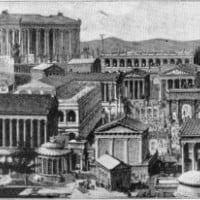
Huge center for the Roman politicians and public. Many fascinating structures, some of which are sadly reduced to dust. It had what is believed to be the world's first shopping mall, and structures built throughout the rule of Rome. Brilliant display of Roman wealth, and architectural ingenuity.
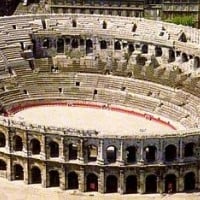
It seems Nimes was quite the bustling Roman metropolis, with the Maison Carree, and this Amphitheater.
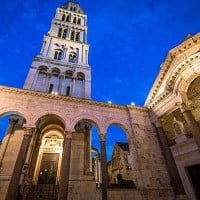
Built on the orders of Diocletian himself, it was to be his elaborate, fortified retirement complex. It remains in present day Split, Croatia. Half the complex was to house a garrison, the other half was Diocletian's retirement grounds.
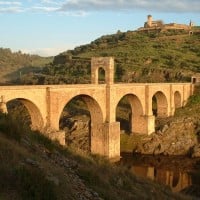
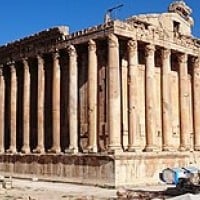
Commissioned in 150 AD, the Temple of Bacchus still stands relatively well preserved, but only because it was under rubble from other adjoining temples for a number of years. It is located in present day Baalbek, Lebanon. The region has been regularly populated for 8-9,000 years, and was a Roman province during the time of its construction. The region has been historically ravaged by earthquakes, and has seen many different rulers since the Romans, particularly Christians and Muslims, possibly explaining how the temples have been neglected over the years. Lebanon is a long way from Rome and shows Roman influence reaching into Asia long before Constantinople.
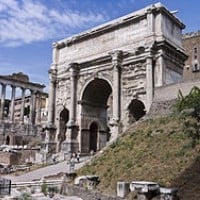
Located on the northeast end of the Forum, it was dedicated in 203 AD to commemorate the Roman victories over the Parthians under Emperor Septimius Severus and his two sons, Caracalla and Geta. The sons ruled Rome jointly as co-emperors after their father's death (Feb. 4, 211). Caracalla had Geta assassinated in 212, and had all public acknowledgement of Geta removed, including any depictions of Geta on this white marble arch.
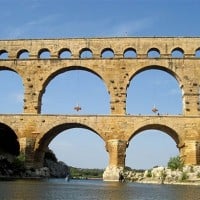
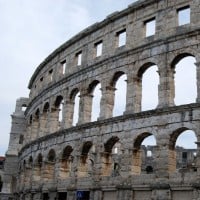
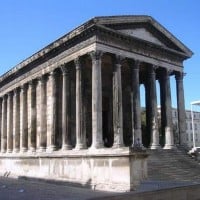
Dedicated in 4-7 AD to the grandsons of Augustus, Gaius Caesar and Lucius Caesar. It's one of the best preserved Roman structures, and was used as a site for Gladiatorial games, chariot races, and mock naval battles. It is still used as an arena for bullfighting. Located in present day Nimes, France.
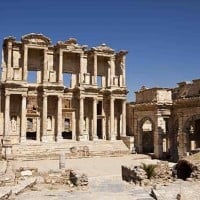
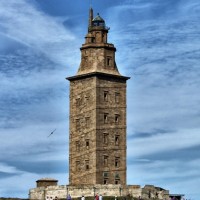
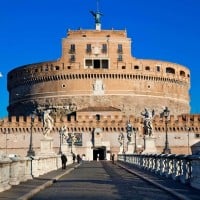
Originally commissioned by the powerful and competent Emperor Hadrian as a mausoleum for himself and his family, it has since had many different occupants, including being a fallback fortress for the Popes. It is now a museum.
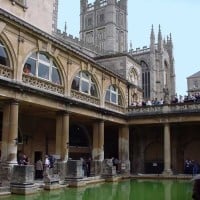
Thanks for adding, and a great entry as the Roman Baths are not only architecturally significant, but are in part a reason the Aqueducts were built.
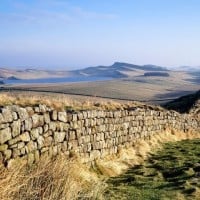
Realizing the Roman advance in Britannia could go no further north (and could not be effectively held), Hadrian had this wall built across the island, from coast to coast, to hold out Britannia's fierce defenders. It was a very ambitious undertaking, and had guard stations on the Roman side at intervals that could be easily reinforced should the enemy try to scale the wall. I believe it marks the Roman Empire's northernmost held territory, which would mean Rome could go no further, and this border would only lose ground. The beginning of the end for the Roman Empire? Perhaps.
